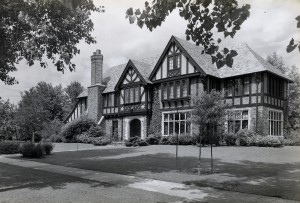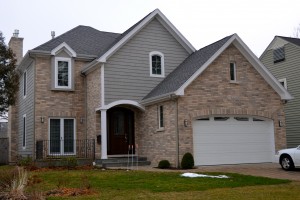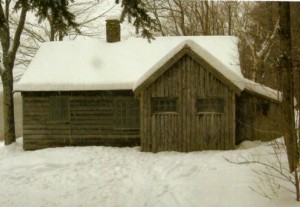Being both an Architect and a Realtor people often ask me about architectural styles and which ones are my favorites. Instead of focusing on favorite styles, I believe the most important and distinguishing feature for a home is how truthful the materials are to the given style.

Home by Edward A. Anderson Company, Woodstock Ave. Kenilworth circa 1950
Ok, so here’s what that means. Too often today, homes take on a hodge-podge of styles and builderesque details which add to the loss of their basic character and charm. Of all the factors that go into good design, the most important is what I call Four-Sided-Architecture. Simply put, this means using the same materials on the sides and back of a home as those on the front.

Violation of Four-Sided-Architecture - materials should change at inside corners only.
Historically there are numerous examples of this true expression of material or Four-Sided-Architecture. It’s a shame that today with advances in building techniques many still try to save money and employ a Hollywood-Set mentality and focus only on the front façade of their home. Once you know about this, you’ll be more aware of it everywhere, just take a look. You’ll see that good design uses the same materials on all four sides no matter what the style of the house is. So more than any style, it’s the truth to material and it’s historical significance that is paramount to making any architectural style work.
Few people know about the National style? It is rooted in Native American dwellings. It is rectangular with side gabled roofs similar to the rustic Vermont cabin that Poet, Robert Frost purchased in 1939. This cabin became his cherished summer residence for the next quarter century where much of his writing was done. Look at it, it’s not very stylistic, however, it definitely represents Four-Sided-Architecture. Frost, a purist, had been known to say that a poets “style is the way he caries himself towards his ideas and deeds.” His use of qualities like New England nature, the seasons and the weather became his raw material which accounted for the enduring qualities of his poems simply because they are timeless qualities. Likewise, the real use of truthful Four-Sided-Architecture creates a timeless experience regardless of any specific design and style.

Robert Frost lived in a National Style Cabin of Four-Sided-Architecture
So how does this information help you and your home? When you contemplate an addition, or a maintenance project, be certain not to fall into the Hollywood-Set perils of saving costs on the sides and rear of your home by removing the very materials that are truthfully articulating and expressing the style and character on the front facade.